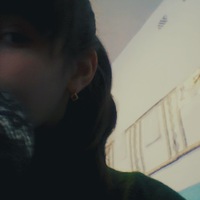
Клас Самостійна робота по темі «Хімічні рівняння» Ca + O2 → CaO HgO → Hg + O2 Ba + O2 → BaO Na +
Br2 → NaBr Fe + Cl2→ FeCl3 N2+ H2 → NH3 Al + C → Al 4 C3 Mg + P → Mg 3 P2 B + O2 → B 2O3 H 2 O → H2 + O2 As + O2 → As 2 O5 K + O2 → K 2 O2 Cu + O2 → CuO H2 + F2 → HF K + Cl2 → KCl Fe + Br2 → FeBr3 Na + H2 → NaH P + O2 → P 2 O5 K + S → K 2S Ag + O2 → Ag 2O Al + I2 → AlI3 C + H2 → CH4 KClO3 → KCl + O2 Ba + HCl → BaCl2 + H2 Li + H 2 O → LiOH + H2 Al +WO3 → W + Al 2 O3 PbO2 + H2 → Pb + H 2 O Ca + HCl → CaCl2 + H2 Al + Cr 2 O3 → Al 2 O3 + Cr SiO2 + HF → SiF4 + H 2O Fe 2 O3 + H2 → Fe + H 2 О Na 2SO4 + BaCl2 → BaSO4 + NaCl Fe 2 O3 + HCl → FeCl3 + H 2О Zn + HCl → ZnCl2 + H2 NaBr + Cl2 → NaCl + Br2 0
0
 0
0
Ответы на вопрос
 Внимание! Ответы на вопросы дают живые люди. Они могут содержать ошибочную информацию, заблуждения, а также ответы могут быть сгенерированы нейросетями. Будьте внимательны. Если вы уверены, что ответ неверный, нажмите кнопку "Пожаловаться" под ответом.
Внимание! Ответы на вопросы дают живые люди. Они могут содержать ошибочную информацию, заблуждения, а также ответы могут быть сгенерированы нейросетями. Будьте внимательны. Если вы уверены, что ответ неверный, нажмите кнопку "Пожаловаться" под ответом.

(NH4)+KOH+Cr2O3=KCrO2+H2O
CaCl2+K3PO4=Ca3(PO4)2+KCl
BACl2+Cr2(SO4)3=BaSO4+CrCl3
HK7(Ga+H2O72)=H⁷KB AlWO3 W + Al 2 O3
PbO2 + H2 Pb + H 2 O Ca + HCl CaCl2 + H2
Al + Cr > - 2 O3 Al 2 O(3 + Cr SiO2 + HF >~- SiF4 + H 2O
Fe 2 O3 + H2Fe H 2 О Na 2SO4 + BaCl2) BaSO4- (NaCT)>=H²
 0
0
 0
0

Ca + O2 → CaO This is a combination reaction where calcium (Ca) reacts with oxygen (O2) to form calcium oxide (CaO).
HgO → Hg + O2 This is a decomposition reaction where mercury(II) oxide (HgO) decomposes to form mercury (Hg) and oxygen gas (O2).
Ba + O2 → BaO This is a combination reaction where barium (Ba) reacts with oxygen (O2) to form barium oxide (BaO).
NaBr2 → NaBr This is a displacement reaction where sodium (Na) reacts with bromine (Br2) to form sodium bromide (NaBr).
Fe + Cl2 → FeCl3 This is a combination reaction where iron (Fe) reacts with chlorine (Cl2) to form iron(III) chloride (FeCl3).
N2 + H2 → NH3 This is a combination reaction where nitrogen gas (N2) reacts with hydrogen gas (H2) to form ammonia (NH3).
Al + C → Al4C3 This is a combination reaction where aluminum (Al) reacts with carbon (C) to form aluminum carbide (Al4C3).
Mg + P → Mg3P2 This is a combination reaction where magnesium (Mg) reacts with phosphorus (P) to form magnesium phosphide (Mg3P2).
B2O3 + H2O → H2BO3 This is a combination reaction where boron oxide (B2O3) reacts with water (H2O) to form boric acid (H2BO3).
H2 + O2 → H2O This is a combination reaction where hydrogen gas (H2) reacts with oxygen gas (O2) to form water (H2O).
As2 + O2 → As2O5 This is a combination reaction where arsenic (As2) reacts with oxygen gas (O2) to form arsenic pentoxide (As2O5).
K + O2 → K2O This is a combination reaction where potassium (K) reacts with oxygen gas (O2) to form potassium oxide (K2O).
Cu + O2 → CuO This is a combination reaction where copper (Cu) reacts with oxygen gas (O2) to form copper(II) oxide (CuO).
H2 + F2 → HF This is a combination reaction where hydrogen gas (H2) reacts with fluorine gas (F2) to form hydrogen fluoride (HF).
K + Cl2 → KCl This is a combination reaction where potassium (K) reacts with chlorine gas (Cl2) to form potassium chloride (KCl).
Fe + Br2 → FeBr3 This is a combination reaction where iron (Fe) reacts with bromine (Br2) to form iron(III) bromide (FeBr3).
Na + H2 → NaH This is a combination reaction where sodium (Na) reacts with hydrogen gas (H2) to form sodium hydride (NaH).
P + O2 → P2O5 This is a combination reaction where phosphorus (P) reacts with oxygen gas (O2) to form phosphorus pentoxide (P2O5).
K + S → K2S This is a combination reaction where potassium (K) reacts with sulfur (S) to form potassium sulfide (K2S).
Ag + O2 → Ag2O This is a combination reaction where silver (Ag) reacts with oxygen gas (O2) to form silver oxide (Ag2O).
Al + I2 → AlI3 This is a combination reaction where aluminum (Al) reacts with iodine (I2) to form aluminum iodide (AlI3).
C + H2 → CH4 This is a combination reaction where carbon (C) reacts with hydrogen gas (H2) to form methane (CH4).
KClO3 → KCl + O2 This is a decomposition reaction where potassium chlorate (KClO3) decomposes to form potassium chloride (KCl) and oxygen gas (O2).
Ba + HCl → BaCl2 + H2 This is a displacement reaction where barium (Ba) reacts with hydrochloric acid (HCl) to form barium chloride (BaCl2) and hydrogen gas (H2).
Li + H2O → LiOH + H2 This is a displacement reaction where lithium (Li) reacts with water (H2O) to form lithium hydroxide (LiOH) and hydrogen gas (H2).
Al2O3 + H2O → H2AlO3 This is a combination reaction where aluminum oxide (Al2O3) reacts with water (H2O) to form aluminum hydroxide (H2AlO3).
PbO2 + H2 → Pb + H2O This is a displacement reaction where lead dioxide (PbO2) reacts with hydrogen gas (H2) to form lead (Pb) and water (H2O).
Ca + HCl → CaCl2 + H2 This is a displacement reaction where calcium (Ca) reacts with hydrochloric acid (HCl) to form calcium chloride (CaCl2) and hydrogen gas (H2).
Al2O3 + Cr2O3 → Al2O3 + Cr2O3 This is a combination reaction where aluminum oxide (Al2O3) and chromic oxide (Cr2O3) react with each other.
SiO2 + HF → SiF4 + H2O This is a displacement reaction where silicon dioxide (SiO2) reacts with hydrofluoric acid (HF) to form silicon tetrafluoride (SiF4) and water (H2O).
Fe2O3 + H2O → Fe(OH)3 This is a combination reaction where iron(III) oxide (Fe2O3) reacts with water (H2O) to form iron(III) hydroxide (Fe(OH)3).
Na2SO4 + BaCl2 → BaSO4 + 2NaCl This is a double displacement reaction where sodium sulfate (Na2SO4) reacts with barium chloride (BaCl2) to form barium sulfate (BaSO4) and sodium chloride (NaCl).
Fe2O3 + HCl → FeCl3 + H2O This is a displacement reaction where iron(III) oxide (Fe2O3) reacts with hydrochloric acid (HCl) to form iron(III) chloride (FeCl3) and water (H2O).
Zn + HCl → ZnCl2 + H2 This is a displacement reaction where zinc (Zn) reacts with hydrochloric acid (HCl) to form zinc chloride (ZnCl2) and hydrogen gas (H2).
NaBr + Cl2 → NaCl + Br2 This is a displacement reaction where sodium bromide (NaBr) reacts with chlorine gas (Cl2) to form sodium chloride (NaCl) and bromine gas (Br2).
 0
0
 0
0
Похожие вопросы
Топ вопросов за вчера в категории Химия
Последние заданные вопросы в категории Химия
-
Математика
-
Литература
-
Алгебра
-
Русский язык
-
Геометрия
-
Английский язык
-
Химия
-
Физика
-
Биология
-
Другие предметы
-
История
-
Обществознание
-
Окружающий мир
-
География
-
Українська мова
-
Информатика
-
Українська література
-
Қазақ тiлi
-
Экономика
-
Музыка
-
Право
-
Беларуская мова
-
Французский язык
-
Немецкий язык
-
МХК
-
ОБЖ
-
Психология
-
Физкультура и спорт
-
Астрономия
-
Кыргыз тили
-
Оʻzbek tili



























